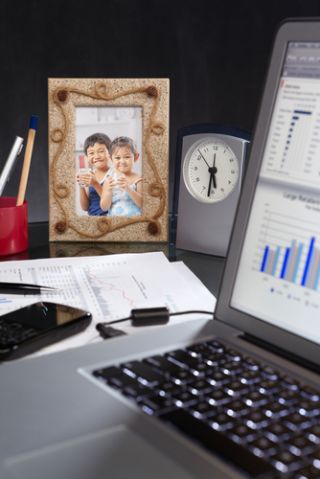Stress
Personalizing Workspaces to Enhance Wellbeing
Decorating workspaces to counteract stress and subsequent burnout
Posted September 23, 2013

As someone who has worked in an office both inside and outside the home, I’ve often contemplated my ideal workspace. I generally prefer a traditional office (i.e., four walls and a door) in a building occupied by co-workers. This situation provides me with the option to either collaborate and socialize in common areas, or work without distraction in my own private space.
More often than not, however, my time working outside the home has been spent at a desk in a shared, open-plan area. While I’ve had many positive experiences working in this way, there is no denying that privacy can be restricted and distractions can be plentiful. So it was with interest that I read newly published research in the Journal of Environmental Psychology investigating the relationship between architectural privacy and emotional exhaustion, and whether this relationship is influenced by perceived privacy and personalizing one’s workspace.
The research was conducted by Assistant Professor Gregory Laurence and colleagues and used a study sample of 87 clerical and administrative employees in a U.S. university. The results showed that employees working in individual offices perceived themselves as experiencing more privacy than those working in shared spaces.
Furthermore, for people who perceived less privacy, a highly personalized workspace was associated with lower levels of emotional exhaustion. The authors noted that personal items such as artwork, photos, figurines and comic strips, can act as both markers of territory and expressions of individual identity, helping workers to maintain their energy when faced with work stress and the distractions common to many shared areas.
A limitation of this study was the cross-sectional study design which prevents the authors from drawing conclusions about the causal relationship between variables. That is, one cannot say that perceived privacy causes improvements in emotional exhaustion—it may be that people experiencing low levels of emotional exhaustion are more inclined to perceive their workspace as private. Nonetheless, the study shows evidence of an association between privacy and exhaustion and provides a basis for further research.
The authors also make the point that private offices do not suit everyone. Such spaces may isolate individuals or reduce interaction with colleagues, which can be particularly detrimental to people with interdependent jobs.
While I’ve often displayed photos of friends and family within my workspace, I’m less inclined to do this when working in part-time positions involving a shared desk. However, as the authors of this study have suggested, even temporary personalization, such as individual screensavers or digital photo frames, can be low-cost strategies with the potential to strengthen one’s ability to cope with distractions and avoid emotional exhaustion.
If nothing else, I’ve found that funny images, inspirational quotes and photos of loved ones can provide me with a burst of perspective at just the right moment and remind me of the reasons I’m working in the first place.
References
Gregory LA, Fried Y, and Slowik, LH. “My space”: A moderated mediation model of the effect of architectural and experienced privacy and workspace personalization on emotional exhaustion at work. Journal of Environmental Psychology. 2013; 36:144-152.


